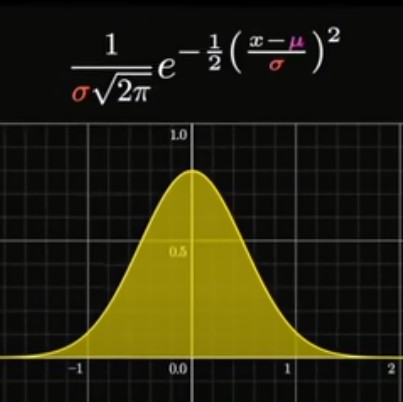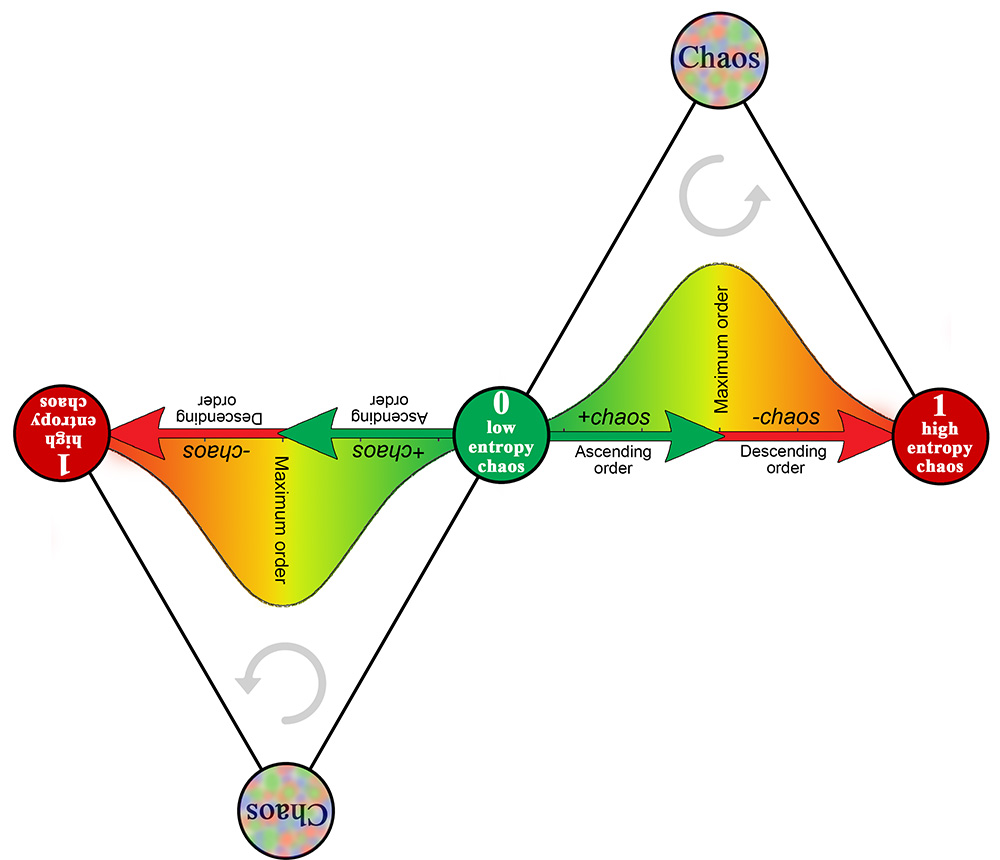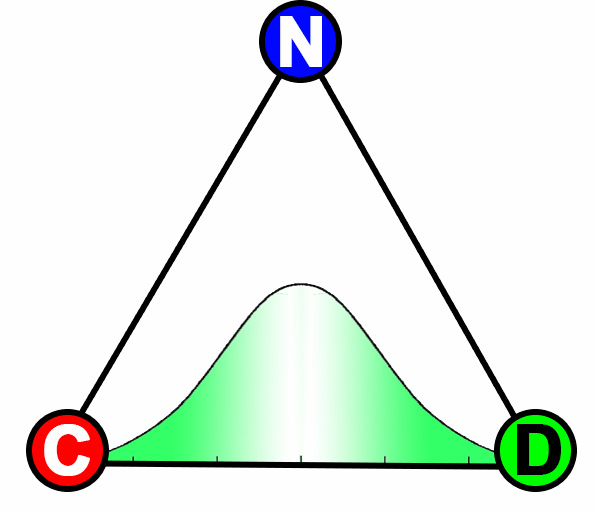Order from Chaos
This is an exciting demo of how order naturally forms from chaos. It’s also especially relevant to the tholonic model because it closely relates two concepts fundamental to the thologram; the bifurcating tree and the Bell curve.
The bifurcating tree, or what is also called the tholonic tree, is the foundation on which the multidimensional thologram is built.
Within each of the infinite self-similar fractally bifurcated tetrahedrons, or tholons, is a Bell curve that describes how that particular tholon will most likely express itself.
What is interesting about 3Blue1Brown’s video is that it shows such a clear relationship between structure, chaos, order, and energy.
The structure is the ordered pegs. The energy is the chaotic movement of the falling balls and the order of the resulting Bell curve. We can also say the movement is the cause, the Bell curve is the effect, and the pegs are the context.
In tholonic terms, we can say the energy (falling balls) is the initial state of NEGOTIATION, as the movement is caused by balancing an imbalance, which is a form of negotiation. In this case, the imbalance is created by the imbalanced energy of mass in a gravitational field, and this acts as the cause. The context of the falling balls in a gravitational field is the fixed pegs. This structure is a form of LIMITATION, as the ball is limited by the pegs that force it to move in one direction or another. The Bell Curve is a form of CONTRIBUTION, i.e., what the process of NEGOTIATION and LIMITATION produces, the effect.
In the tholonic model, it is hypothesized that gravity is an expression of awareness and intention that is limited to, or expressed within, the material spectrum, in which case, it is awareness and intention that are causing the balls to fall.
Applying this to a trigram, we can see that the Bell curve, which tells us the most likely form of interaction expression will be, exists between the structure (DEFINITION), and the final result (CONTRIBUTION), which is also its most energetically balanced state. This curve is where the actions happen, where reality unfolds. In this case, it is the process of the balls falling through the pegs. The spectrum between DEFINITION and CONTRIBUTION is also the relation between all three points that requires the dimension or concept of time.
We also see that the tip of the ell curve is most closely aligned with the originative cause, NEGOTIATION, suggesting that the expression over time between D and C will not only be one of NEGOTIATION and within the context of DEFINITION (pegs) but also the context of its final state (C).
It’s also worth pointing out that the Bell curve can ONLY exist between D and C. This is explained in detail in the book, and too long to get into here.
There is now one more point to consider: the 4th point, the point that will create the tetrahedron, or tholon, of these balls falling into a Bell curve. In the world of Newtonian mechanics, the 4th point is called power and is the result of force, acceleration, and mass interacting with each other. In the case of electricity, it is watts, resulting from volts, amps, and resistance. In the case of Relativity, it’s joules, resulting from energy, mass, and the speed of light. In all cases, this 4th point is a reference to the movement of energy over time, which we can measure. In this case, the Newtonian laws apply most closely, as we have mass, force, and acceleration, so our 4th point is simply a measure of newtons (the force needed to accelerate one kilogram of mass at the rate of one meter per second squared).
If gravity is an instance of Awareness and Intention as expressed on the material spectrum, then we have a direct correlation of newtons to awareness, but an incomplete one as it is A&I that is also behind the mass and acceleration as well. Ideally, we’d want to combine these definitions into a new definition that also integrates with all three, the same way we can create white from red, green, and blue, but how to do that is tricky as the definition of each property depends on the other properties, so it’s a bit tautological.



